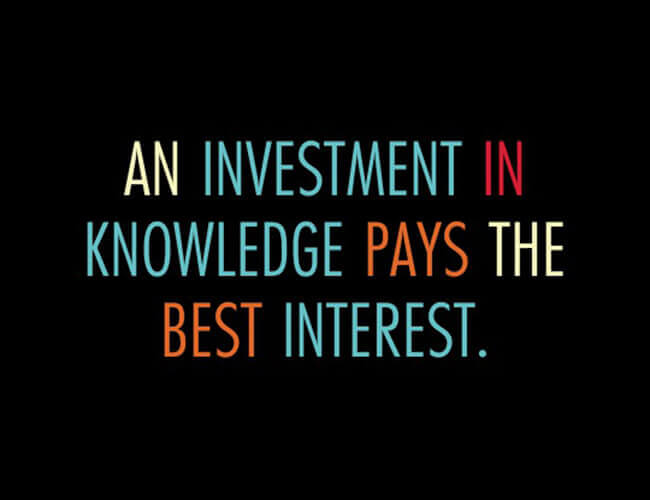Roll out is often considered the end of a software or systems project, but the end of every Salesforce project is really just the beginning. As a Salesforce administrator or champion, you need to be prepared to help your organization through its journey with Salesforce.
Chart a course for success by making investments in knowledge, data quality and your users. Investing in knowledge gives you the power to steer the system towards more fully supporting your organization’s needs. Investing in data quality is essential for building trust in the system and investing in users helps build community around Salesforce.
Invest in Knowledge
According to the old adage, knowledge is power. The more you know about Salesforce, the better equipped you’ll be to answer user questions, make decisions about enhancements and be a valuable resource to your organization.
Salesforce is a platform whose features and functionality increase with each thrice-yearly release. Your organization’s use of Salesforce will change over time and knowing what the capabilities of Salesforce are is important for maintaining the growth and health of the system. Learning doesn’t have to be a chore, though. There are excellent online resources and a vibrant community out there for you to engage with.
The Salesforce Help portal should be your first stop when you have a question. It’s rich with user guides, videos and support answers. If you’re looking for help on how to do something specific in Salesforce, check out the Salesforce Foundation’s YouTube playlist of the Top 25 Best Help Videos from Salesforce. The video topics cover everything from activating your computer to creating workflow rules and importing data.
If the videos didn’t answer your question, you can go to either the Power of Us hub or the Salesforce Success Community to look for answers. The Power of Us Hub is the community for Salesforce Foundation customers and has groups and topics of interest to nonprofits. Joining a user group is a great way to connect in real life with local nonprofits using Salesforce. You can find a list of regional user groups on the Salesforce Success Community site.
In addition to self-paced online training, Salesforce offers instructor led training courses for administrators, developers, solution designers and technical architects. The ADM201 class is designed for new administrators and will give you an excellent foundation in the platform.
The knowledge you gain and skills you develop can be applied immediately to your investments in data quality and a user community.
Invest in Data Quality
Quality data is the holy grail of any data system. What constitutes quality data can vary by organization or even within an organization so invest in the time to understand how data is being used and develop a data strategy. Implementing a data quality strategy doesn’t have to be onerous. Start small and see where that leads you.
Every piece of information being collected and entered into Salesforce costs the organization time and money. Extra fields that are “nice to have” clutter the screen, slow down data input and may not be consistently filled in. Develop best practices around what constitutes the minimal record for each major object in Salesforce by asking questions like “What information do I need?” For newsletter subscribers, the minimum usable information may be first name, last name and email address. For donors, the minimum field set may be expanded to include mailing address.
Once you’ve defined the minimum usable data set, make those fields required on the page layout. To require different fields for different record types, use validation rules to enforce data entry.
Free text fields are notorious for collecting inconsistent data. To drive consistency in the values, consider changing free text fields to picklists and adding an option for “Other…” Add a text field to collect the information when “Other….” is selected and create a validation rule so the field is only used when “Other…” is chosen.
Validation rules and picklists will help keep the data clean, but there are a myriad of other ways in which data get messy. Data quality reports can help you keep an eye on information and alert you to issues. Salesforce Labs has a collection of data quality dashboards that are a good starting point for looking at data quality. You can also create your own reports and schedule them to be run regularly. Review the report results and take action as needed to bring the data back in line.
Invest in Users
Creating an enthusiastic community of users creates shared ownership of Salesforce and the organization’s information. Investing in users can be as easy as taking a few extra minutes to show someone an easier, faster way to do a task (Hint: editable list views and scheduled reports are magical) or creating a workflow rule that sends an email update.
Fun and food also go a long way to engaging people. Try scheduling lunchtime brown bag sessions where people can ask Salesforce questions and get rewarded with chocolate for attending. A Salesforce scavenger hunt with small prizes or bragging rights can be a fun way to introduce new features and new functionality.
If your organization has duplicate records, you may want to hold a Dupe Derby to eliminate them. Create teams and count how many duplicate records were merged during the derby. Some organizations have even held “Salesforce Days” with multiple events designed to engage and educate users.
As Ben Franklin said, “An investment in knowledge pays the best interest.” Even small investments in knowledge, data quality and user engagement can yield big results.





